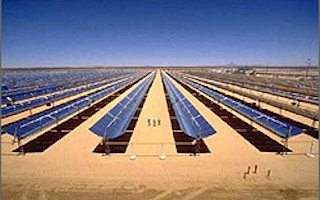Asia has been the global leader in clean energy development over the past decades, but investment into this sector might be hindered if governments fail to agree on a consistent renewable policy for the next few years, according to an official from Bloomberg New Energy Finance (BNEF).
Citing the latest BNEF report on global clean energy investment, BNEF head of Asia Pacific, Milo Sjardin, told Eco-Business that the region has experienced strong growth over the past decade and is now the largest location for clean energy investments in the world, toppling Europe, the Middle East and Africa.
“ Given the region’s large energy demand, competitive costs of renewables and vast potential for renewable deployment, Asia’s top position is unlikely to change for the years to come,” Sjardin said. “Although China, Japan and India will drive investments for Asia, renewables will become increasingly important in all countries.”
Governments, he said, plays an important role in helping Asia making the transition to clean energy with fair, effective and efficient energy policy, as well as government incentives that drives renewable energy growth.
Citing the BNEF report, Sjardin said that although global clean energy investment slid 11 per cent from $268.7 billion this year compared to $302.3 billion in 2011. China saw investment in clean energy hit $68 billion driven mostly by the financing of solar farms across the country by the Chinese government.
The solar industry attracted the largest chunk of total clean energy investments, he added.
Solar projects reaped the most funding with US$142.5 billion of the total, followed by wind at US$78.3 billion. Energy-smart technologies including electric vehicles and energy efficiency saw US$18.8 billion investment. Biomass and waste-to-energy investment was US$9.7 billion.
Despite the decline in overall investments, solar actually increased its share slightly to more than half or 52 per cent of global. Other countries accelerating investments in solar generation are Japan and Australia.
Sjardin explained that this year and in the coming years, solar deployment in Asia is expected to continue rapidly for a multitude of reasons.
Firstly, solar costs will continue to decline in the next few years. This will increase the competitiveness of solar power.
Secondly, energy demand is on the rise across Asia and solar represents a technology that can be quickly deployed.
And lastly, solar will enable communities not connected to the grid to get electricity at a competitive price with alternative options; as a result, distributed generation and so-called micro-grids will grow rapidly across Asia.

















